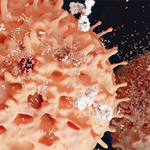
AB Visual Arts / shutterstock.com
Preventing adverse outcomes in individuals who have rheumatic diseases is a daily goal for rheumatologists. For example, rheumatologists prescribe medications and perform screening to prevent erosions in rheumatoid arthritis (RA), renal failure in systemic lupus erythematosus and flares across all diseases. Many of these actions are classified as secondary or tertiary prevention, because individuals have already presented with clinical signs and symptoms of disease (e.g., swollen and tender joints, nephritis), and often meet established classification or diagnostic criteria. In addition, rheumatologists often try to prevent other adverse outcomes through approaches classified as primary or secondary prevention. These approaches include vaccinations for immunocompromised individuals, use of bisphosphonates in individuals who are at high risk of fracture on the basis of low bone mineral density, and statin use in individuals with rheumatic diseases with high risk for cardiovascular disease based on objective biomarkers, such as elevated cholesterol.
However, it is less common for rheumatologists to treat with medications to prevent the onset of a primary rheumatic disease based solely on a biomarker or other risk factor—for example, preventing the onset of inflammatory arthritis in someone with rheumatoid factor (RF) and/or anti-citrullinated protein/peptide antibody (ACPA) positivity, psoriasis or the first episode of gout in an individual with very elevated serum uric acid. Traditionally, many rheumatologists are deeply rooted in the concept, “Don’t treat a test; treat the patient,” and await clinically apparent signs of disease prior to initiating treatment.
Studying Disease Prevention
For some primary rheumatic diseases, the approach to preventing the first flare of disease may be changing. Several trials now underway or recently completed seek to prevent or delay the first appearance of clinically apparent synovitis in RA.
One of these trials, PRAIRI (Prevention of Clinically Manifest Rheumatoid Arthritis by B Cell-Directed Therapy in the Earliest Phase of the Disease), was based in the Netherlands and was completed in 2016. Although a peer-reviewed manuscript has not yet been published, the study’s results were reported at scientific meetings.1 This study identified individuals who were positive for anti-citrullinated protein/peptide antibody (ACPA) and rheumatoid factor (RF) without evidence of synovitis at baseline and randomly assigned them to receive a single dose of rituximab (1,000 mg) or placebo. Approximately 80 subjects were randomized, but overall rates of development of RA (~40%) were similar between treated and untreated patients. However, the onset of inflammatory arthritis was delayed by ~12 months in the treated subjects.


